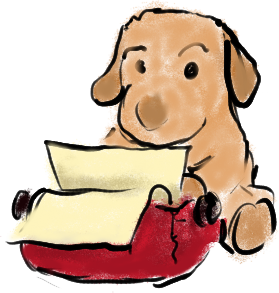Saturday, October 22nd was the date of the third and final prep workshop for the 2011 NaNoWriMo. Led by Crystal Blount (dreamhigher11), this workshop focused on dialogue and the use of dialect.
This is Crystal’s 3rd year entering the competition. Won once; gave up once. She teaches technical writing for a living.
30 people attended the workshop.
Slides and handout
Accountability is important in achieving writing goals.
Objectives
- What is dialogue?
- How different from a real life conversation?
- How do we use dialogue to develop characters and events?
Dialogue is a tool to develop character
- Dialogue pushes forward the plot
- Revealing the internal thoughts, feelings and beliefs; and reactions to external events going on
- Helps understand the characters and what motivates them.
- Characterization is the inconsistency of these three elements. Characters might not be aware of their goals
Dialogue is about action and reaction
How different is dialogue from a real life conversation?
- gets to the point, skips over banalities
- pick up the dialogue where the action begins
Real converations there are pauses that don’t move the plot forward. Edit these out
Jack Woodford’s quote about dialogue,/h2>
Jack Woodford = famous writer from 1930’s and 1940’s – wrote a tell all about the publishing industry. He wrote: Characterization is an accident that flows out of action and dialogue
- You might write things that don’t fit
- You find out the characterization through writing
- Experimenting with different actions and dialogues. As an author, you can write from either perspective. Can be difficult to stay motivated if you plan too much. You need to know the style that works for you. Accident –> fresh for the reader
Dialogue is not conversation: the aim is to
- provide plot or character information
- to develop characterization and depth of the characters
Show, don’t tell.
Characterization
- Get ideas by people watching (especially on buses and trains); imagine what led to the conversation and what happens after
- Understanding of the character is revealed by the dialogue that you write
- If you have good character motivations (reference to hipster PDA from last year)
- Characterization can spark your imagination (come up with scenes)
- Reveal internal thoughts through external dialogue
- Reaction to events around them
Rhythm of writing dialogue
- Robert McKee coined the term beats (see on youtube the three minute versions)
- smallest unit of construction; exchange of behaviors in action/reaction
- goal of beat is to learn an action
Traditional conventions (dialogue tags: he said, she said) vs. non-traditional
Instead of tags, reflect the individuality of the characters (through speech patterns)
As a reader, we’re used to the word said, the mind blanks over it, but it is noted; and you can keep track of who said what.
Have some tags throughout the book; but streamline wherever possible.
Said is a more neutral term.
Establish personality traits between people.
Emotional state of the participants of the dialogue.
Use dialogue to increase the tension.
- Screaming, shouting, action
- You can enrich your text in just a few lines
- Move beyond “he said, she said”
Q: Is it bad to use other tags than said continuously? (admitted, argued, barked, begged, blustered, …)
A: No, it is better to do that than to use said (when the scene calls for a tag). Depends on your writing style.
Dialogue layout and punctuation
- single speech marks: modern: ‘
- double speech marks used to indicate a quote or indirect comment within direct speech
- post-modern: don’t use speech marks at all (belief that the tone of the speech and individual’s distinctive syntax and vocabulary should signal the reader that someone is speaking
Expository section of the novel is where you set things up (difference in syntax of the character that is speaking)
See publishing houses for samples of what they are expecting.
British writers use single quotes; American writers use double (Kirsten said)
Commas and other punctuation precede the close of the speech mark. A full stop after the close quote mark but before the close speech mark. Ex.: “no comment”! But if the quote ended in an exclamation mark, it would be: “no comment!”!
IF dialogue is broken at the end of a sentence, then resumed then the restarted speech will begin with a capital letter but the dialogue tag will have a lower case one.
Paragraphing
Every time a new character speaks, start with a new paragraph. If one character speaks then performs an action then speaks again later, it can remain in one paragraph.
Dialogue tags: keep them to a minimum unless necessary. Use a dialogue tag the first time a character speaks. Remind readers of who is saying what by interspersing it with action relating to the speaking character.
Adverbs in tags is the worst thing. E.g., Carol said placatingly. Better to have an action word.
Regional dialect can enrich your story; but some believe that it is a burden on the reader.
Don’t reproduce the entire dialect, just include one or two words. (e.g., Mebbe instead of Maybe)
Use key words. Don’t use dialect unless you have a good understanding.
Dialect can be more expository without writing it out explicitly.
Show rather than tell. Let the dialogue explain what is going on (action/reaction to events).
Discriminate – leave out the boring stuff.
You don’t want talking heads. People shouldn’t talk more than three sentences.
Exercise
Write a dialogue in which one person tries to seduce another one; make the seducer an unlikely candidate for the role. Intensify their speech and word choices.
Inmaginary conversation among three pretentious people. Have them claim to socialize with people they don’t know. To expose pretension, have them be found out. see the reaction
Several members of a large, intimate family are arguing about money.


No Comments